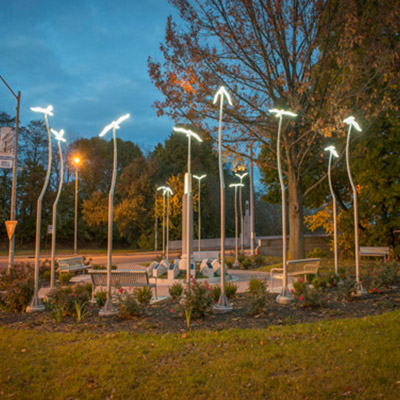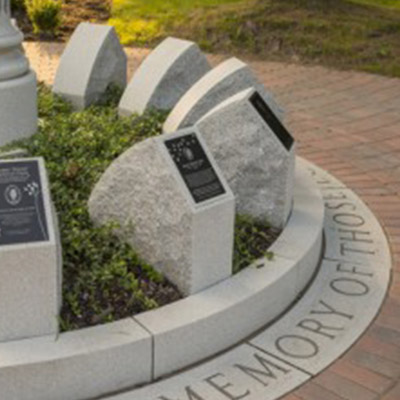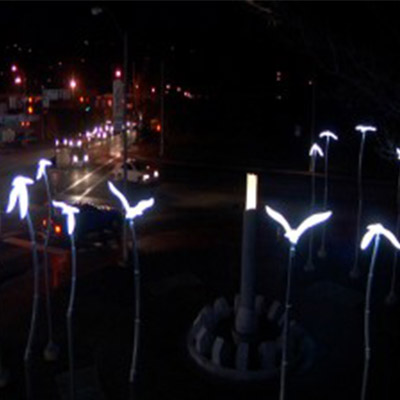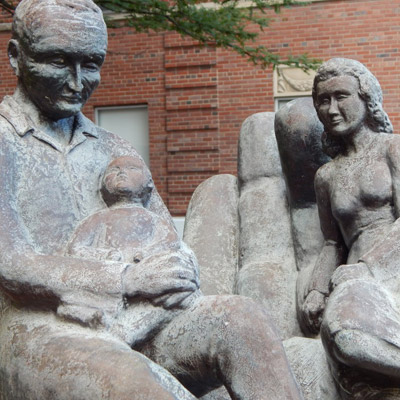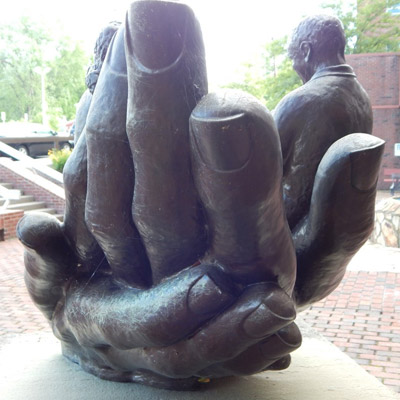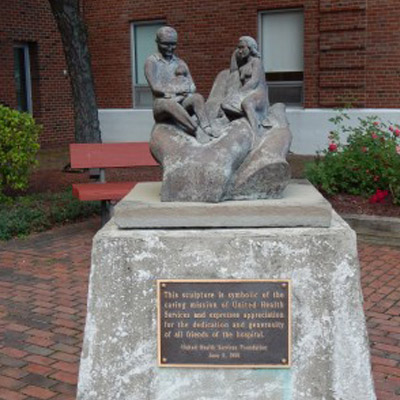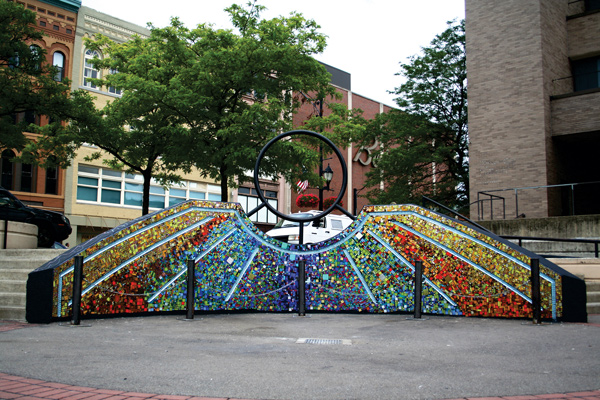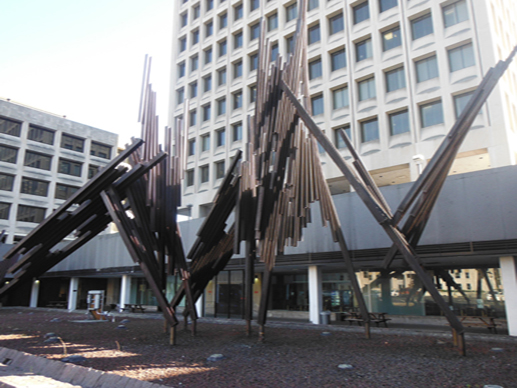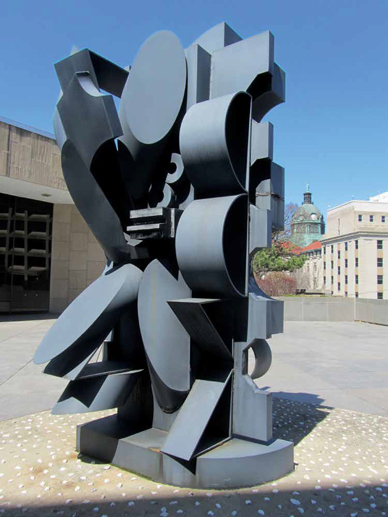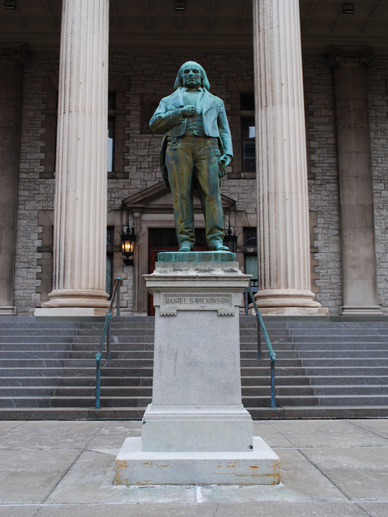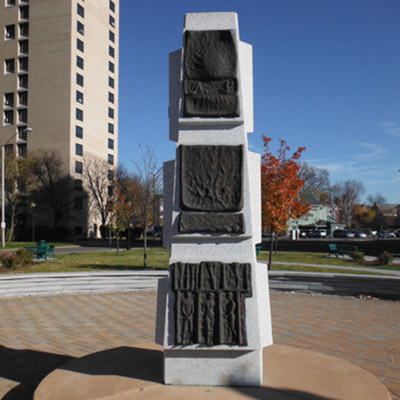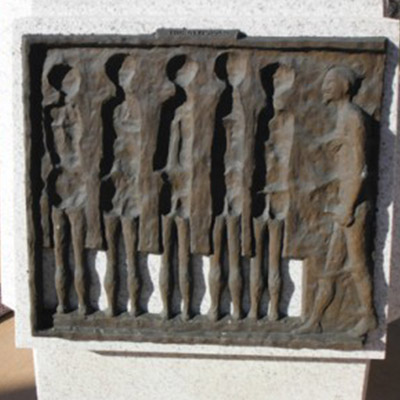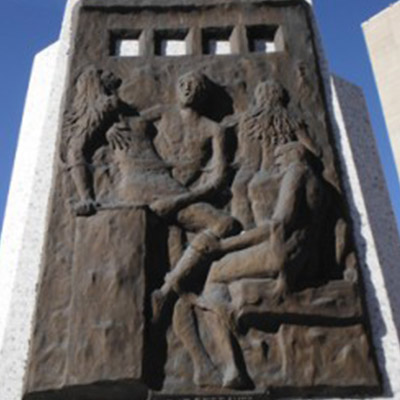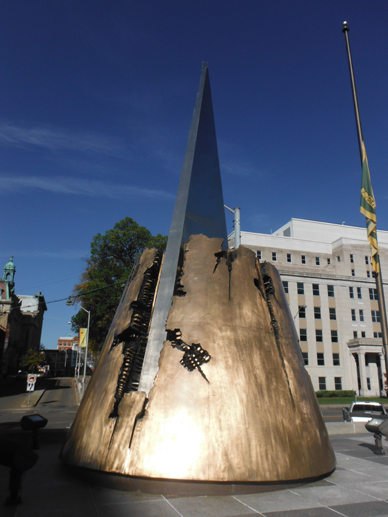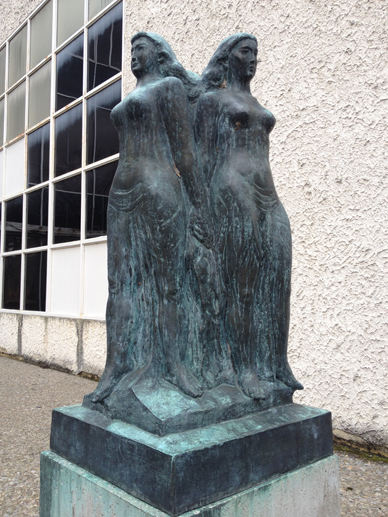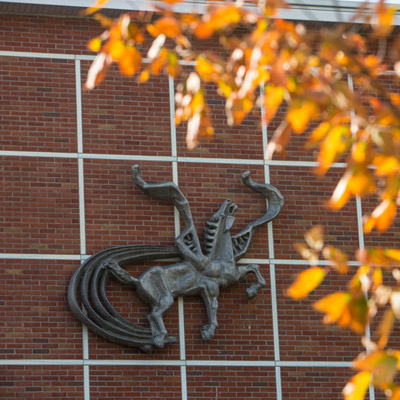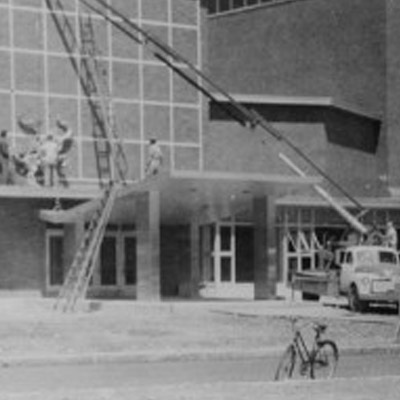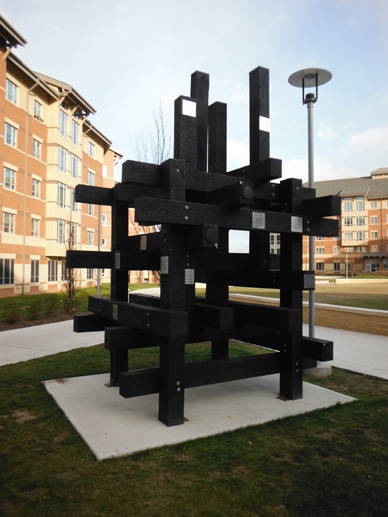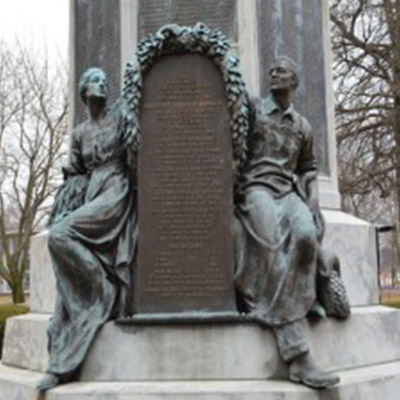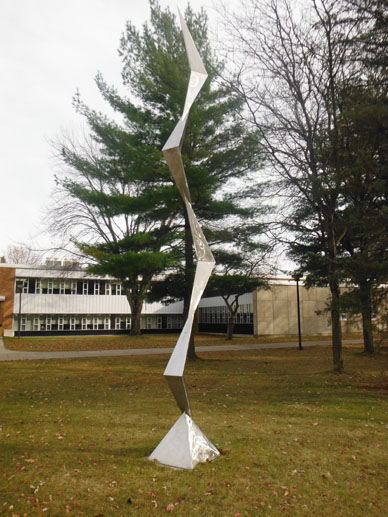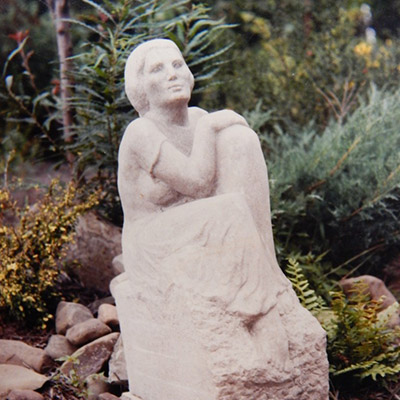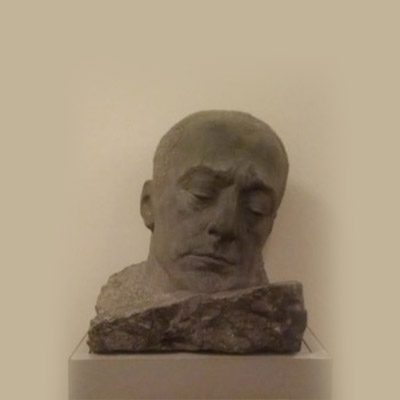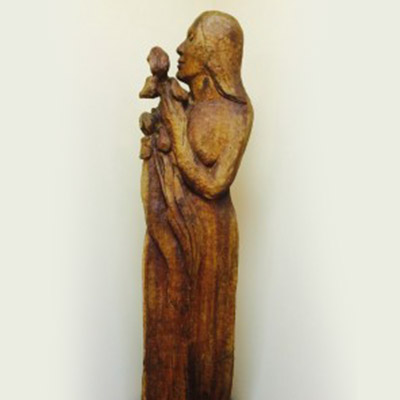By George Basler
Tommy Iafrate calls the musical Light in the Piazza “a wonderful story about how everyone deserves love.” He also calls it the most musically challenging show he’s ever directed.
At its heart, Light in the Piazza is “a musical love story, a musical fable,” said the head of the musical theater program at Binghamton University. Iafrate is now directing an all-student production of the show, which opens April 11 and will run through April 18 in BU’s Art Museum.
The show’s book by Craig Lucas features multi-dimensional characters while the score by Adam Guettel, the grandson of famed Broadway composer Richard Rodgers, went against the trend of pop music on Broadway. Instead, Guettel wrote a complex score filled with unexpected harmonic shifts, lush arias and passages sung in Italian.
Light in the Piazza “has the most intensely romantic score of any Broadway musical since West Side Story,” wrote New York Times critic Stephen Holden when the musical opened in 2005.
Based on a 1960 novella by Elizabeth Spencer (which received a 1962 film adaptation with Olivia DeHavilland and Yvette Mimieux), Light in the Piazza tells the story of a mother and her adult daughter who are spending the summer in Florence, Italy. The daughter was kicked in the head by a pony when she was 12 years old and suffered cognitive injury that has affected her emotional maturity.
When the daughter falls in love with the son of a prominent Florentine family (and vice versa), the over-protective mother struggles to come to terms with their relationship and what the future holds for her daughter.
The BU production features a cast of 17 students, most of whom are in the university’s theater program. While Light in the Piazza is a challenging show for them to perform, Iafrate became convinced they could handle it after they performed another challenging musical, Stephen Sondheim’s Into the Woods, last season.
“It’s a hard show, but they are rising to the occasion,” Iafrate added, noting the students can identify with the musical’s story of a young person working to establish her own identity independent of her mother.
The BU production is breaking ground in one way. Instead of presenting it in a theater, Iafrate is staging it in the university’s art museum. He had the idea after watching a musical concert in the gallery and thinking a play could be performed there just as well. He took the idea to Diana Butler, the museum’s director, who gave the go-ahead.
I think it (Light in the Piazza) is a beautiful story, and the opportunity to do it, and explore site-specific theater, is exciting,” Iafrate said.
During a performance, actors and audience members will move through different locations in the museum from the center of the gallery to the balconies to the grand staircase. Audience members will adjust their positions according to watch and engage with the performance. Audience size will be limited to 99 persons for each performance. (Ten seats will be set aside for people who can’t stand.)
While doing site-specific theater is exciting, it’s also challenging, Iafrate said, particularly in learning how to use a non-theatrical space theatrically. To prepare, Iafrate has had cast members rehearse in different campus locations to get a feel for performing outside a theater. During a performance, the actors will have the authority to make choices on where to stand and when to move.
“It’s so unlike any play I’ve directed before,” Iafrate said.
The BU production will feature no stage lighting and stripped-down orchestration. A small ensemble of flute, cello and piano. under the direction of musical director Melissa Yanchak, will accompany the actors.
“This generation is open-minded toward equity and compassion. The story (of Light in the Piazza) resonates with them,” Iafrate said.
IF YOU GO: Binghamton University’s Department of Theatre will present Light in the Piazza April 11-18 in the BU Art Museum. Performances are at 8 p.m. Thursday, April 11, and Friday, April 12; 2 and 8 p.m. Saturday, April 13; 2 p.m. Sunday, April 14, and 8 p.m. Tuesday, April 16, through Thursday, April 18.
While accessible seating will be available for patrons who require seats, audience members should expect to stand and move around the space for the duration of the performance. (Note: For the performance on Tuesday, April 16, all audience members will be able to sit in chairs provided throughout the museum.) Performers may be blocked by architectural features (walls, balconies, staircases) or by other audience members following the action on foot. At all points, the seated audience will still be able to hear the dialogue and music.
Tickets at $20 ($15 for seniors, veterans, alumni, faculty and staff; $10 for students and children) can be ordered on the Anderson Center website, www.binghamton.edu/anderson-center (go to Upcoming Events). The box office can be reached at 607-777-ARTS.


